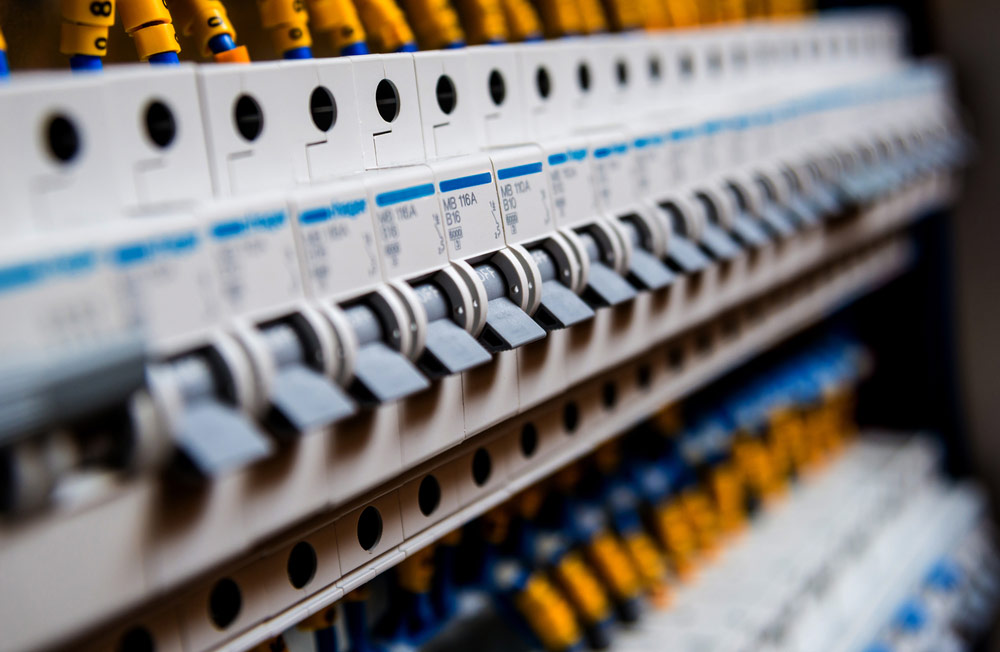In the ever-evolving landscape of technology, the humble switchboard has undergone remarkable advancements that are reshaping how we manage and distribute electrical power. Switchboards are pivotal in ensuring electricity’s safe and efficient distribution in residential, commercial, and industrial settings.

This blog will delve into the fascinating world of switchboards, exploring the latest technological advancements and their implications for the future.
The Heart of Electrical Distribution
Switchboards are the central hub of electrical distribution systems. They are responsible for receiving power from the grid or generators and then distributing it to various circuits, ensuring that electricity reaches its intended destination safely. Traditionally, switchboards consisted of mechanical switches, fuses, and wires, providing primary control and protection. However, as technology has advanced, so too have switchboards.
Also Read: A Comprehensive Guide to Understanding 5g and Its Potential
Smart Switchboards: The Future is Now
One of the most significant advancements in switchboard technology is the emergence of smart switchboards. These innovative devices are equipped with intelligent sensors, communication systems, and automation capabilities, transforming them from passive distribution points into active, data-driven hubs.
- Intelligent Monitoring: Smart switchboards can continuously monitor electrical parameters such as voltage, current, and power quality. This real-time data helps detect anomalies and potential issues, allowing for proactive maintenance and reducing the risk of electrical faults.
- Remote Control: Remote access and control capabilities enable operators to manage switchboards from a distance. This is particularly valuable when physical access is limited or dangerous, such as in substations or industrial facilities.
- Load Management: Smart switchboards can optimize power distribution by dynamically adjusting load priorities. They can automatically shed non-essential loads during peak demand periods, improving energy efficiency and reducing costs.
Enhanced Safety and Reliability
Safety is paramount in electrical systems, and modern switchboards are designed to enhance safety and reliability. Here are some notable features that contribute to this:
- Arc Fault Detection: Smart switchboards incorporate arc fault detection technology, identifying potentially hazardous electrical arcs and disconnecting the affected circuit, mitigating the risk of fires.
- Ground Fault Protection: Ground fault protection mechanisms are essential in preventing electric shock hazards. Advanced switchboards can quickly detect ground faults and isolate the faulted circuit, minimizing downtime and safety risks.
- Self-Diagnostics: Built-in self-diagnostic tools enable switchboards to monitor their health. They can identify issues within the switchboard and provide early warnings, reducing the likelihood of unexpected failures.
Integration with Renewable Energy
As the world transitions towards greener energy sources, switchboards adapt to accommodate renewable energy inputs, such as solar panels and wind turbines. These energy sources are often intermittent and require sophisticated integration to ensure seamless power distribution.
- Microgrid Management: Smart switchboards can manage microgrids efficiently by seamlessly switching between grid power, renewable sources, and energy storage. This capability is crucial for ensuring a stable and sustainable power supply.
- Battery Integration: With the rise of energy storage solutions, switchboards can integrate batteries into the electrical system. This supports renewable energy utilization and provides backup power during grid outages.
Environmental Considerations
Advancements in switchboard technology also extend to environmental considerations. As the world becomes more conscious of sustainability, switchboards are being designed with energy efficiency and reduced environmental impact in mind.
- Energy-Efficient Components: Modern switchboards incorporate energy-efficient components, such as high-efficiency transformers and power factor correction systems. These elements help reduce energy losses and lower carbon footprints.
- Recyclable Materials: Switchboard manufacturers increasingly use recyclable and eco-friendly materials in their designs. This not only reduces waste but also aligns with global sustainability goals.
Challenges and Future Prospects
While the advancements in switchboard technology are exciting, they come with their own set of challenges. Ensuring cybersecurity and protecting smart switchboards from potential cyber threats is paramount. Additionally, as switchboards become more complex, maintenance and training for operators become crucial to ensure their proper functioning.
Looking ahead, the future of switchboard technology holds promise. We can anticipate even smarter switchboards with improved artificial intelligence capabilities for predictive maintenance, greater integration with renewable energy sources, and enhanced connectivity within the broader smart grid ecosystem.
Also Read: Know the Future of Computer Science
Collaborate with Leading Suppliers
Switchboards have come far from their humble origins as essential distribution points. Today, they are at the forefront of technological innovation, pivotal in ensuring electrical power’s efficient and sustainable distribution.
It’s worth noting that buying from reliable brands becomes crucial when considering switchboards for your electrical infrastructure. These trusted manufacturers invest in rigorous quality control, engineering expertise, and adherence to industry standards, ensuring that their products not only meet but often exceed performance expectations. Thus, selecting switchboards from reliable brands adds an extra layer of assurance regarding durability and consistent functionality. As we continue to wire the future, it is clear that the evolution of switchboards will remain a critical component of our modern electrical infrastructure.
